TNS Experts
This post was submitted by a TNS experts. Check out our Contributor page for details about how you can share your ideas on digital marketing, SEO, social media, growth hacking and content marketing with our audience.
An SEO audit is the process of analyzing a website’s SEO and identifying any problems that prevent it from ranking for certain topics and keywords. An SEO audit is an assessment of a site’s content, technical SEO and off-page factors.
Webmasters and digital marketers need to stay on top of their game if they want their websites and pages to perform and rank in the top spot of the search engine results pages.
Marketers can ensure that their websites are performing at their best by conducting an SEO audit and then implementing the suggestions or findings discovered in the site audit.
An SEO audit is the process of analyzing a website to determine its ability to appear in the Search Engine Results Pages (SERPs).
An SEO audit checks if a website follows the best practices as laid out by popular search engines such as Google and Bing.
Furthermore, an SEO audit checks if any problems with the website’s health prevent the site from performing well in the SERPs.
You can think of an SEO audit as an inspection of the website to determine which area(s) the webmaster needs to focus on to improve rankings and performance.
Here are some of the common areas that are checked when doing an SEO audit:
The purpose of conducting an SEO audit is to be able to identify and fix issues that negatively affect the organic search rankings of a site.
Now that you know the SEO audit process and its purpose, let’s discuss how you can conduct your own SEO audit.
Before you can implement new changes to improve your search engine rankings, you must first establish where your site is currently ranking for your target keywords.
How else will you know whether or not the changes you’ve implemented have resulted in ranking improvements when you conduct a follow-up SEO audit?
Without tracking changes in search performance, you’re flying blind.
You won’t know what you should keep doing or stop doing.
That’s where keyword tracking comes in.
By knowing which position your website currently ranks for specific keywords, you’ll have a clear idea of which keywords to focus on, create better content on and build more links to.
You can use SEOptimer’s keyword tracking tool to identify all the top keywords that your website is ranking for, the position that your website ranks for those keywords and some more data points.
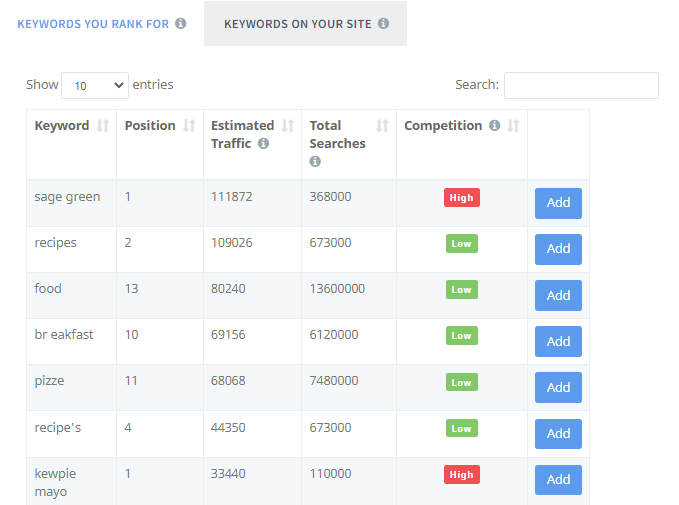
With this keyword tracking tool, you can enter keywords manually, or the tool will suggest keywords based on those for which your website is already ranking.
An essential part of any SEO audit is to have predetermined goals that you’d like to achieve with regard to SEO and site rankings.
Before you start conducting an SEO audit, you need to ask yourself what your search engine optimization goals are for your website or a client’s site.
Examples of SEO goals are:
Once you know your SEO goals, you can use an SEO audit to determine how far away you are from reaching these goals and what action steps you need to take to get there.
To rank, you need to survey the competitive landscape. This entails analyzing what your competitors are doing.
Once you know what your competitors are doing, you can reverse-engineer their most successful strategies into your SEO strategy.
By conducting a competitive analysis of your competition, you’ll be able to answer the following questions:
The first step in analyzing your competitors is determining who they are.
This sounds pretty obvious, and you probably know who some of your main competitors are, but if you look at the data, you may realize that new competitors have entered the market.
An easy way to determine your real competitors is by simply entering your top keywords in Google. This will reveal the top-ranking domains ranking for your target keyword(s).

Do this for your priority keywords and add the ranking domains in a spreadsheet.
Once you’ve established who your competitors are, you can start analyzing their SEO strategies to see if you can implement some of them.
You also want to check the speed of your competitors’ websites.
Doing this will indicate how fast you need your website to load so that you can tweak it to ensure that you've got the fastest page loading speed.
You can check the PageSpeed of any website using Google’s PageSpeed Insights.
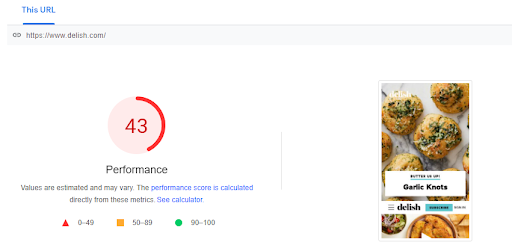
Next, you will want to find the best-performing keywords and the pages that rank for them.
As mentioned earlier, you can use SEOptimer to check the best-performing keywords of any website, including your competitors’ sites.
The reason for doing this is to get an idea of which keywords you can target and what content to create (this is obviously dependent on how difficult it is to rank for those keywords).
Additionally, you can use this information to get more data on what you need to do to rank for target keywords. With this data on your competitors’ content, you can determine:
Auditing your website’s on-page SEO should majorly affect your entire SEO audit process.
The reason for this is because, according to Google’s “How Search Engines Work” report, on-page factors such as keyword usage in headings, SEO-friendly URLs and meta descriptions still play an important role in how search engines rank your website for specific search queries.
So, how do you conduct an on-page SEO audit?
First, identify your top 5 to 8 pages and/or blog articles.
Then analyze each one of these pages to determine if you need to make the following changes:
If you were to ask any SEO professional what his or her top 3 priorities are to get their content to rank, they would most likely include backlinks in their answer.
Backlinks, or inbound links or incoming links, are links from an external source or website to your website.
Google uses the number of backlinks to your website to determine how authoritative your content and website are in the eyes of other people on the web.
We know that backlinks are a super important ranking signal. Therefore, a backlink audit should be another essential part of your SEO audit process.
It’s really easy to conduct a backlink audit with SEOptimer.
Simply add your website’s URL to the Backlink Checker tool and get immediate feedback on the number of backlinks, amount of different websites referring back to your website and your site’s Domain Authority.

This check shows that Dollarsprout has 132k backlinks and 4,600 unique domains (websites) linking to their content and website.
Your site’s Domain Authority indicates how authoritative your website is based on a combination of the quantity and quality of inbound links.
Based on these insights, you can determine if you need to focus on link-building, the process of acquiring backlinks, to improve your website’s rankings.
You can also conduct a backlink audit on your competitor’s website to get an idea of how many backlinks they’ve got.
The next step of the SEO audit process is to check if your website is indexed.
You can run this check quite quickly using one or both of the following methods:
This is the fastest way to check if a URL is indexed in the search engine’s database. Go to Google.com and type “site:youdomain.com” in the search bar.
Here’s an example:
This will reveal all of the indexed results that start with the URL you entered, in this case, “https://seoptimer.com”:
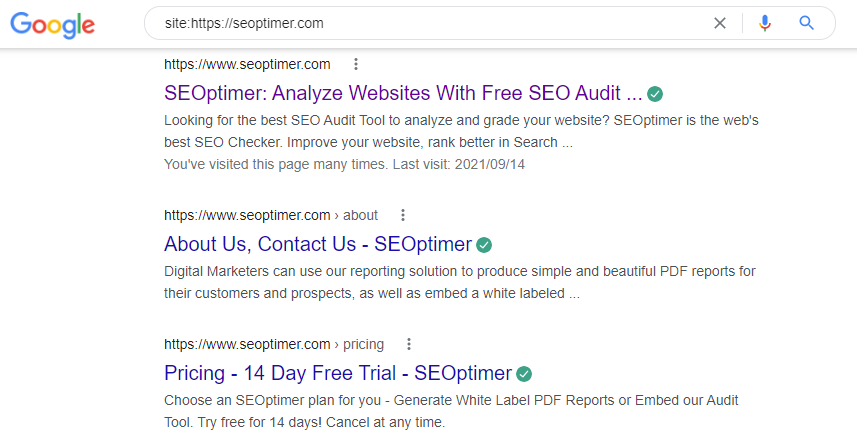
The “Inspect URL” function in Google Search Console is the more accurate method of checking if an exact URL of your website is indexed.
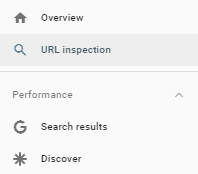
Go to URL inspection in Google Search Console and type in the URL that you’d like to check.

Here we can see that the URL I checked is indeed indexed by Google and therefore it can be discovered by users searching for my website.
You can also use this function to check that other vital pages and pieces of content are indexed too.
For example, let’s say that we want to check if the Pricing page is indexed. All we’ve got to do is type in “seoptimer.com/pricing” in the URL inspection tab.
Now it’s time to find the web pages that Google isn’t indexing.
To find these indexing issues, you can use the following tools:
SEOptimer
SEOptimer automatically checks if there are any indexing issues with your website when you request a crawl.

Google Search Console
If you’re using Google Search Console, simply go to Google Search Console > Coverage:
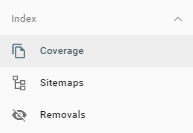
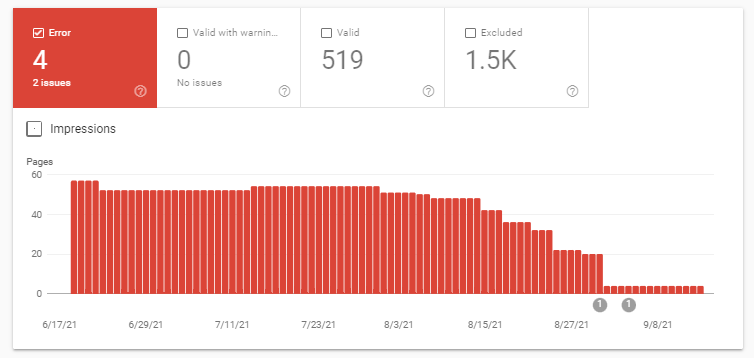
In the above example, we can see that there are four indexing errors with the example website. By scrolling down to the Details section, you will find the exact indexing problems that you can then go ahead and fix.
Have you ever landed on a website and had to wait 5 seconds for it to finish loading? If yes, then you know how frustrating it is.
Not only are slow websites frustrating to deal with as a real human, but Google has also announced that page speed is a ranking factor.
And by page speed, we mean the loading time of your website on mobile devices.
You can use a tool such as PageSpeed Insights to analyze your website’s loading speed. Most SEO audit tools like SEOptimer also have a built-in page speed checker:

Ideally, your website should load in under 3 seconds. This will result in lower bounce rates and an increase in the number of times people visit your website.
If your website takes too long to load, then fixing this should be one of your top priorities.
Here are some of the common contributors to slow page speed:
Google views mobile user experience as one of the most crucial search engine ranking factors.
Since the roll-out of mobile-first indexing in 2018, Google has used the mobile version of your website for ranking and indexing.
This means that you need to ensure that your website is mobile-responsive.
You can use Google’s Mobile-Friendly Test Tool to check your website’s mobile responsiveness.

Here you can see that Google considers the SEOptimer website mobile-friendly.
Page speed and mobile responsiveness are probably the latest significant ranking signals that Google has added in the last few years.
But there’s a new kid on the block regarding search ranking signals.
Recently, Google announced that it would add page experience as an official ranking factor. A large chunk of the “page experience” score will consist of Core Web Vitals.
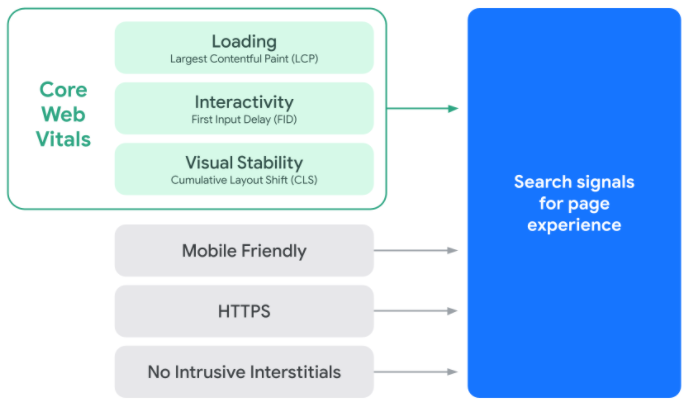
Core Web Vitals consists of 3 factors: largest contentful paint, first input delay and cumulative layout shift. Google considers these three factors necessary in a page’s overall user experience.
Here’s a brief summary of these three factors:
Largest Contentful Paint (LCP): This is the measure of time it takes to load the largest image or a text block on a page. The ideal time for LCP to finish loading should be under 2.5 sec.

Image source: web.dev
First Input Delay (FID): This is the amount of time it takes a user to interact with web elements such as clicking on a link or a button. Google recommends an FID of less than 100 milliseconds.

Image source: web.dev
Cumulative Layout Shift (CLS): This third Core Web Vitals factor measures how stable the elements of a page are while it loads. Google suggests that a website with a CLS score higher than 0.1 needs improvement.

To view your Core Web Vitals data and scores, go to Google Search Console > Experience > Core Web Vitals:
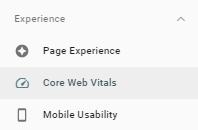
There, you will find data for your website's Mobile and Desktop versions. Next, click on Open Report, depending on which version you’d like to view.
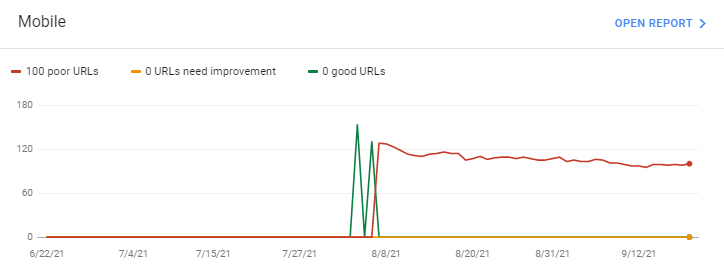
Here we can see that this site has a lot of work to do regarding optimizing Core Web Vitals.
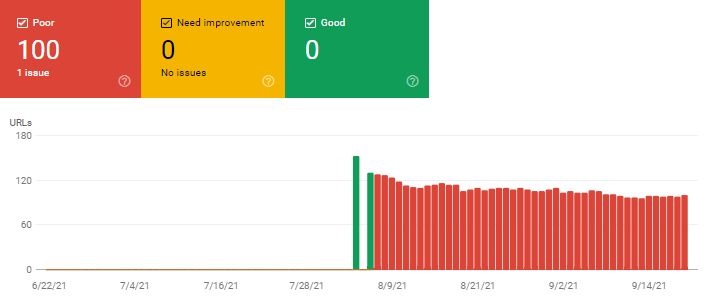
It seems like the issue is with LCP taking too long to load:
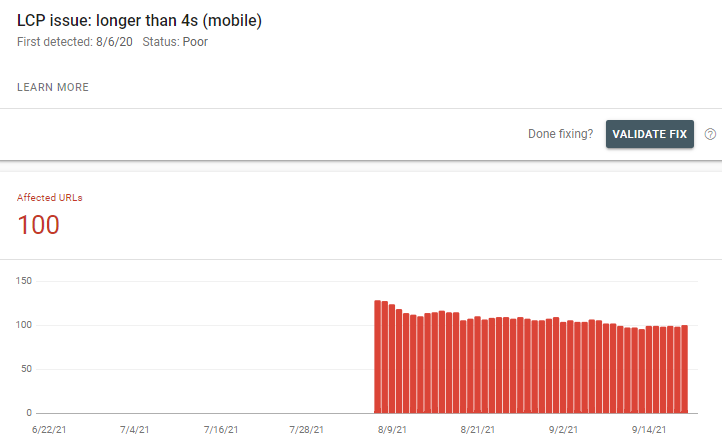
Here are some common fixes to improve your Core Web Vitals scores across LCP, FID and CLS:
SEOptimer’s SEO Audit tool can also run a Core Web Vitals check that you can view in your website SEO audit reports.

Broken links don’t really bother Google; in fact, Google stated that it doesn’t lose much sleep over broken links.
But broken links create an unpleasant user experience and can lead to increased bounce rates, lower conversions and less time spent on your site, which is something you really don’t want.
In the words of Google’s John Mueller:
“If you find things like this, I'd fix it primarily for your users, so that they're able to use your site completely. I wouldn't treat this as something that you'd need to do for SEO purposes on your site, it's really more like other regular maintenance that you might do for your users.”
To find broken links, go to Google Search Console > Coverage. In this case, we’re explicitly looking for 404 errors:
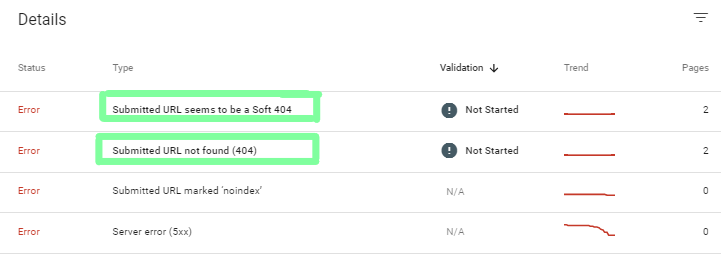
So how do broken links end up on your site?
Once you’ve found the pages that serve a 404, you can fix these broken external and internal links using one of the following methods:
You can also use a free tool like Broken Link Check to find broken links on your site.
Conducting an SEO audit manually and without the use of a tool will be a very time-consuming and tedious process.
Instead, use an SEO audit tool like SEOptimer to audit your website’s SEO automatically. This tool runs all the checks we mentioned above and provides suggestions on improving your site’s SEO.
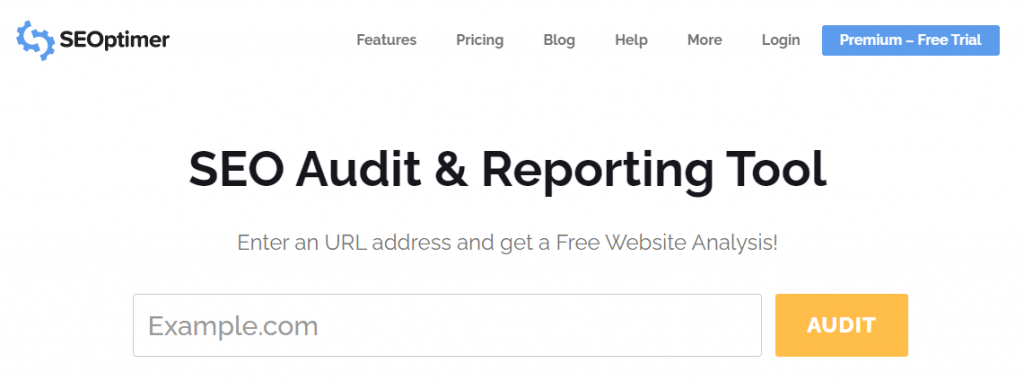
And there, we have completed an entire SEO audit!
By following these steps, you’ll be able to quickly diagnose any problem a site may have with its SE,O preventing it from ranking in a search engine.
You’ll also receive some of our best posts today
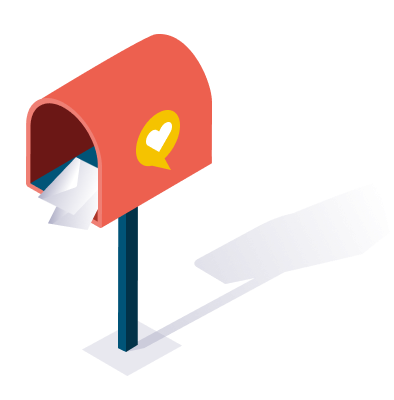
This post was submitted by a TNS experts. Check out our Contributor page for details about how you can share your ideas on digital marketing, SEO, social media, growth hacking and content marketing with our audience.